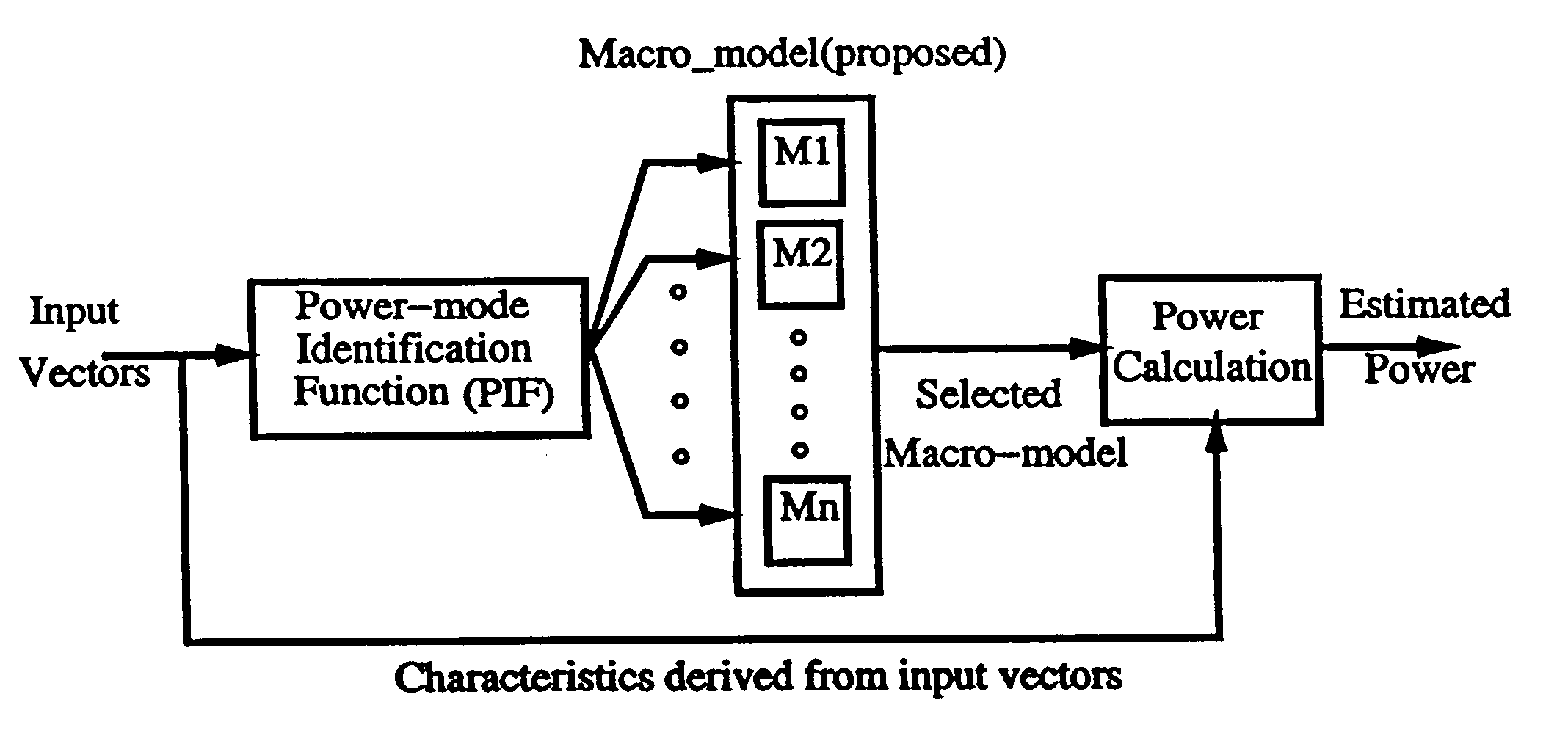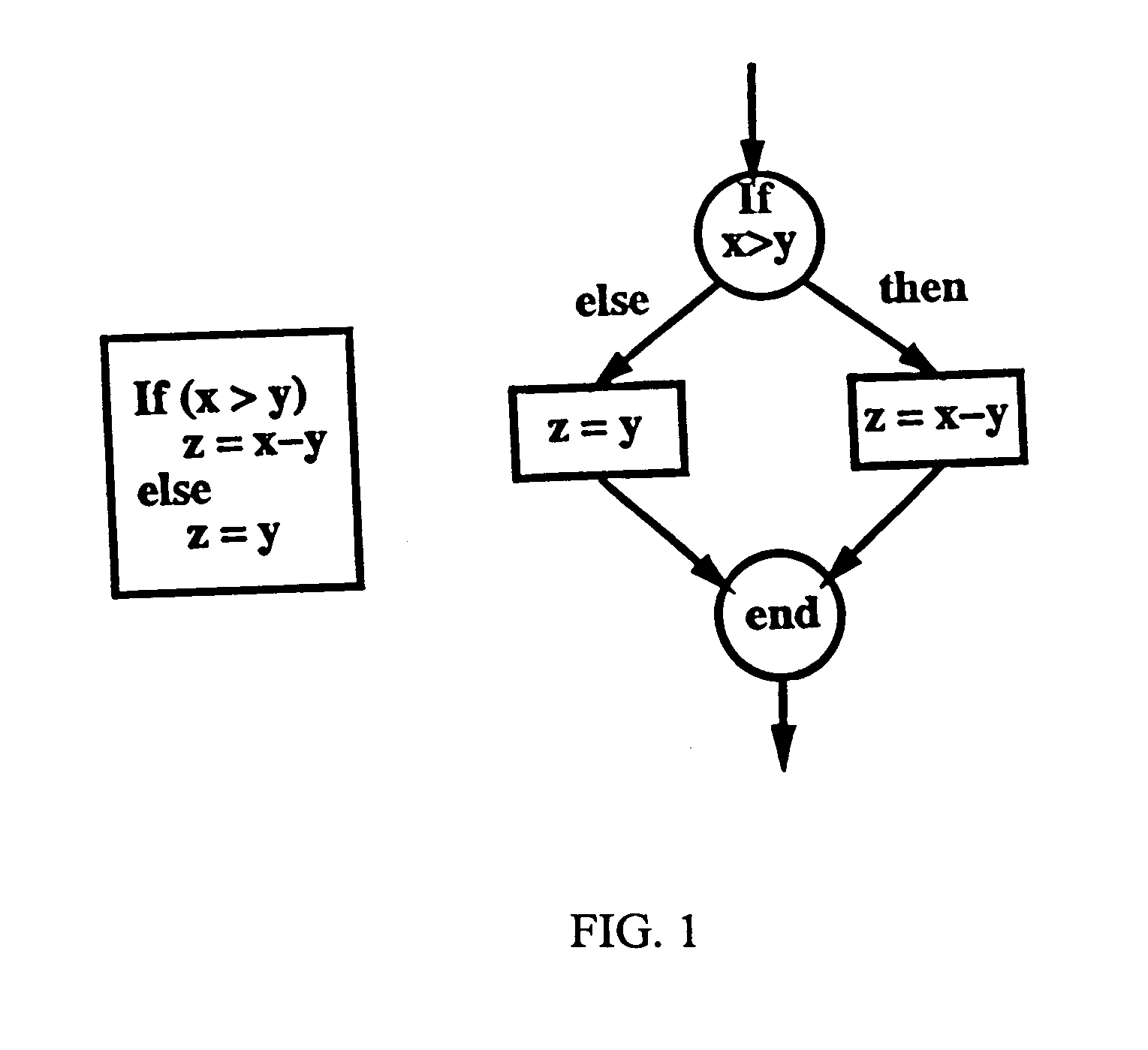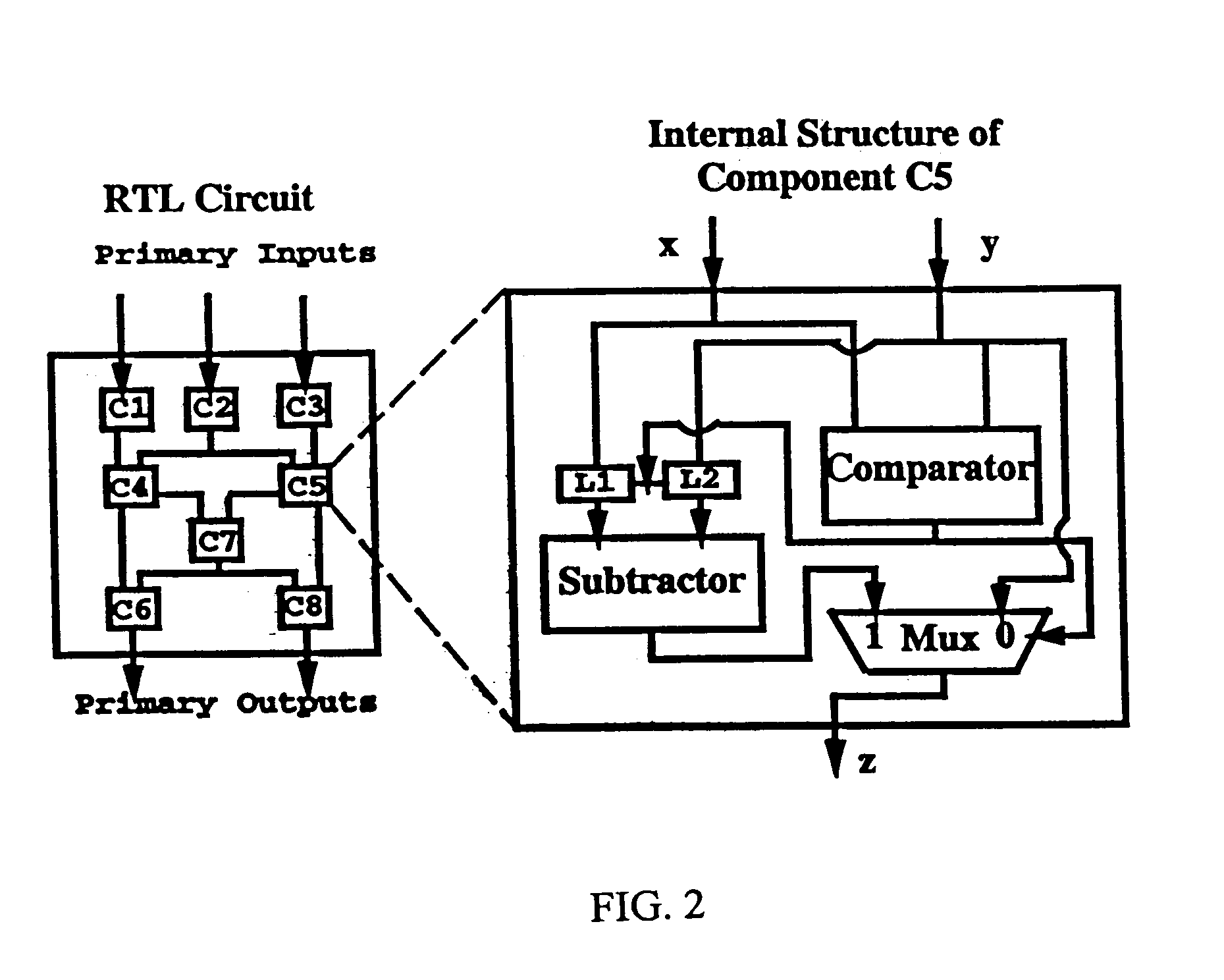Power mode based macro-models for power estimation of electronic circuits
a power mode and power mode technology, applied in the field of power mode based macro-models for power estimation of electronic circuits, can solve problems such as limited accuracy
- Summary
- Abstract
- Description
- Claims
- Application Information
AI Technical Summary
Benefits of technology
Problems solved by technology
Method used
Image
Examples
example implementation
IV.C. Example Implementation of Individual Components
In this section, the implementation details of the constituent steps of an example implementation of the disclosed macro-modeling technique are discussed. This section is divided into four subsections: subsection IVC.1 describes the theory used for building the cycle-accurate macro-models (blocks 1, 2 and 3 in FIG. 5), subsection IVC.2 describes the process of evaluating the accuracy of the conventional and the proposed macro-models (blocks 9 and 10 in FIG. 5), subsection IVC.3 details the identification of the power modes (blocks 4 and 5 in FIG. 5) and, finally, subsection IVC.4 explains the construction of the power mode identification function (block 8 in FIG. 5).
1. Building Cycle-accurate Power Macro-models
The construction of the macro-model (step 3 in FIG. 5) can be implemented using a variety of techniques, such as, linear and non-linear statistical techniques, power sensitivities, tree-based regression etc. In the present e...
PUM
 Login to View More
Login to View More Abstract
Description
Claims
Application Information
 Login to View More
Login to View More - R&D
- Intellectual Property
- Life Sciences
- Materials
- Tech Scout
- Unparalleled Data Quality
- Higher Quality Content
- 60% Fewer Hallucinations
Browse by: Latest US Patents, China's latest patents, Technical Efficacy Thesaurus, Application Domain, Technology Topic, Popular Technical Reports.
© 2025 PatSnap. All rights reserved.Legal|Privacy policy|Modern Slavery Act Transparency Statement|Sitemap|About US| Contact US: help@patsnap.com



